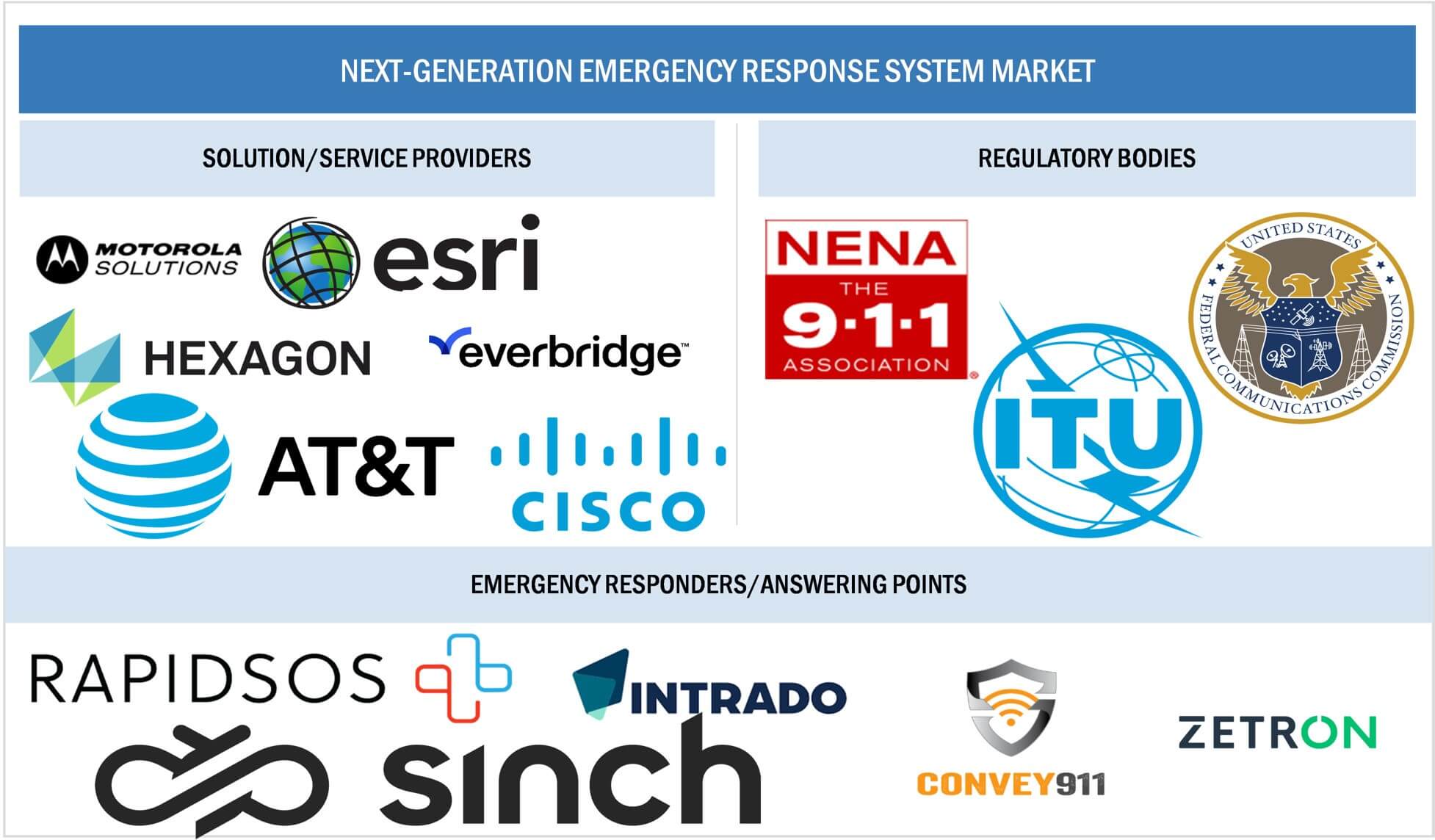With concerns about terrorism, natural disasters, and other threats on the rise, governments are increasingly investing in public safety technologies. Next generation emergency response systems are seen as a key part of this investment.
Citizens are changing their preferred channels for everyday communication switching over the last decade from phone calls to text and visual-centric ways to interact with each other and exchange information. On the other side, communication with emergency response services stays focused on spoken language, probably the most direct way of human interaction. With concerns about terrorism, natural disasters, and other threats on the rise, governments are increasingly investing in public safety technologies. Next generation emergency response systems are seen as a key part of this investment, as they can help to improve preparedness, response, and recovery efforts. Next generation emergency response systems (NGERS) provide emergency medical services (EMS) agencies with advanced technologies and tools to help them respond to medical emergencies more efficiently. These systems can help improve patient care, response times, and outcomes. MarketsandMarkets forecasts that the
next generation emergency response system market size is projected to grow from US$2.4 billion in 2023 to $3.3 billion by 2028, at a CAGR of 7 percent during the forecast period. The proliferation of connected devices, such as smartphones and wearables, is creating a wealth of data that can be used to improve emergency response. Next-generation systems can integrate with these devices to collect real-time information about the location and condition of individuals in need, which can help to improve situational awareness and guide response efforts.

The use of managed services manifests as a critical facilitator in the context of next generation emergency response systems, transforming how institutions confront emergencies. Because of the unmatched scalability provided by these cloud-based solutions, computer resources may be quickly adjusted to suit the changing needs of emergency scenarios. Managed services, with their redundant data centers spread around the globe, are inherently reliable and highly available, ensuring continuous accessibility and responsiveness at pivotal times. Cloud-based storage solutions provide the smooth management and archiving of enormous volumes of data that are created in real time during emergencies. Managed services also enable emergency responders to collaborate and communicate in real-time, which promotes efficient information exchange. With insights from past data, reaction teams can be better prepared for future occurrences thanks to integrated analytics tools. Managed services, which place a high priority on cybersecurity and compliance, offer a safe environment for managing sensitive data. The utilization of professional services plays a pivotal role in enhancing the overall effectiveness and reliability of these critical infrastructures. Expert consultants bring valuable insights to the design and implementation phases, tailoring solutions to specific geographic and demographic considerations. Training programs conducted by professionals ensure that emergency response personnel are adept at utilizing the latest technologies and adhering to best practices. Cybersecurity and data protection become paramount with periodic audits and compliance checks, safeguarding sensitive information against evolving threats. Continuous monitoring and improvement, facilitated by professional evaluations, maintain the system's optimal performance and integration with emerging technologies. Moreover, professional services extend to community engagement, where strategic communication plans and outreach initiatives build public trust and awareness.
Asia Pacific is expected to grow with the highest CAGR during the forecast period
The Asia Pacific next generation emergency response system market is expanding rapidly, owing to a number of factors. Technological advances, such as the incorporation of artificial intelligence, the Internet of Things, and real-time data analytics, are improving the efficiency and accuracy of emergency response activities. Governments around the area are actively investing in emergency response infrastructure, driven by a growing recognition of the critical role these systems play in minimizing the effects of natural disasters and accidents. The Asia Pacific region's vulnerability to natural disasters emphasizes the importance of robust and modern emergency response solutions. Collaboration between the public and private sectors, as well as the incorporation of these technologies into smart city programs, contributes to the market's expansion.
Asia Pacific: Next-generation emergency response system market drivers:
• Many countries in the Asia Pacific region are investing in smart city' initiatives. Next-generation emergency response systems are integral to the concept of smart cities, where interconnected technologies contribute to overall safety and security
• The demand for effective emergency response systems also increases with an owing population. Ensuring the safety of a large population requires more sophisticated and scalable solutions.
• The COVID-19 pandemic has highlighted the importance of efficient healthcare emergency response systems. The experience gained during the pandemic may drive further investments in advanced technologies for healthcare-related emergencies.
• Technological advancements, such as IoT (Internet of Things), Al (artificial intelligence), and real-time communication, enable developing more sophisticated emergency response systems. These technologies can enhance the speed and accuracy of response efforts.
• Government across the Asia Pacific region recognize the importance of upgrading emergency response capabilities. Investments and initiatives aimed at modernizing emergency services contribute to the growth of the next generation emergency response system market.
Asia-Pacific: recession impact
• As central banks increase the interest rates to control the recession, the risk of consumer-led recession rises. Other factors contributing to the global recession are inflationary pressure, geopolitical tensions, supply chain constraints, increasing IT skills shortages, rising food and energy prices, and weakening local currencies.
• In the first half Of 2022, a slowdown was witnessed in consumer IT spending as many device purchases took place in the past two years to enable work-from-home and online classes.
• In July and August 2022, central banks of all major regional economies, including South Korea, the Philippines, Malaysia, Thailand, India, New Zealand, and Australia, increased their interest rates.
• Emerging markets have been witnessing a pessimistic economic outlook the currency devaluations against the US dollar have made imports costlier.
• Japan has been witnessing a weakening Of the JPY as the Bank of Japan (BOJ) is not increasing the interest rates as other developed economies are. This Will impact the country’s corporate earnings.